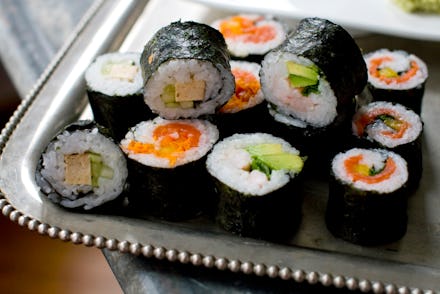What is the imitation crab in sushi really made of? Here's what's actually in your roll

That chunk of pink-hued meat in your California roll? Probably not crab. Imitation crab more like it, but for some reason countless sushi menus have dropped the word's modifier.
Perhaps it's assumed that all crab in a $5 California roll would have to be fake or perhaps restaurants want to slightly mislead customers into believing they're eating something better than they are.
So what is this "crab" meat?
American restaurants substitute imitation crab stick, also called kanikama, for actual crab meat. Made from cheap white fish, like pollock, this crab stick is created from grinding fish meat with binding agents, seasoning, fillers and sugar. The fish paste is then formed into sticks and tinted red on the side to look like a crab leg in the same vein as bacon-shaped, vegan facon. It's pretty much the hot dog of the sea.
This crab-like substitute is vastly cheaper than using actual crab meat, but it's flawed.
For one, there's really no way to know which chemicals or fillers are being used in this fish. And while imitation crab is low in calories and fat, similar to real crab, it's also notably high in sugar and sodium, which true crab meat is not. While crab naturally has some sodium, it does not contain any sugar. And obviously, it objectively tastes more like crab than its imitator.
With American sushi spots seemingly at ease using all types of counterfeit fish substitutions — 94% of the time that tuna you ordered isn't actually tuna — it doesn't seem like sushi restaurants are changing their menus to even read "imitation crab" any time soon. Feel free to ask your server what is actually used in "crab" dishes. And don't be crabby if we ruined your California roll for you... it's time to know the truth!